I’ll never forget the look on my buddy’s face that fateful September day on the South Fork of the Snake River several years back, when I unhooked the little hybrid that had sucked in a small nymph and, without ceremony, knocked it over the head and tossed into the willows. Had it been just a bit bigger, I might have pocketed it and brought it home for the frying pan.
“The racoons’ll get it,” I said, standing up and preparing to cast again. Keith looked off into the willows and then back at me. It was a cathartic moment for a lifelong catch-and-release angler, and I knew exactly what he was thinking.
“That’s hard to get used to,” he said. “I’m not sure I can do that.”
The South Fork of the Snake is possibly the best dry-fly fishery in the Lower 48—a case could be made that it’s among the best in the world. But it’s native Yellowstone cutthroat trout aren’t as numerous as they used to be, thanks to interloping rainbows. Cutties are always looking up. The river’s reputation was built on their bronze backs and orange bellies and their willingness to naively take a high-floating dry. The rainbows, which mingle on the spawning redds with cutthroats and create a fertile hybrid, aren’t as willing to rise for a fly. And, of course, the genetic integrity of the South Fork cutthroats is important, considering range-wide threats to the subspecies—they’re being eaten by the thousands in Yellowstone Lake by non-native lake trout; they’re facing hybridization and competitive threats in the Yellowstone River; and habitat degradation is more common that not throughout the fish’s native range.
For years, fisheries managers along the South Fork have encouraged anglers to catch—and kill—rainbow trout and hybrids (after a bit of practice, it’s easy to tell hybrids apart from cutthroats).
It’s becoming more culturally acceptable in a catch-and-release society to keep fish in certain instances (see this piece) and, frankly, to enjoy them on the grill or wrapped in bacon and perfectly fried. It’s good, healthy food from cold, clean water.
In fact, most trout, aside from those persisting in perpetually tainted waters, are healthy fare.
And there’s my dilemma. I’m off on a long drive this summer which will hopefully will carry me north, well above the Arctic Circle. I’ll travel through the British Columbia cutthroat and bull trout country, up through Alberta’s Banff and Jasper national parks, and back west through B.C., into the Yukon and eventually, Alaska. It will be a journey highlighted by the fish.
And I intend to eat some. Legally, of course.
And, much like Keith that day on the South Fork, I’m struggling with the notion of killing fish—particularly native fish—even for subsistence along the route. I’m not destitute. I can stop into any grocery store from Idaho Falls to Whitehorse to Fairbanks and buy my food. This isn’t about surviving, so much as it is about experiencing … living. It’s been years—literally—since I’ve kept a fish that was native to the waters from which it came. I keep South Fork rainbows and hybrids all the time. I’ve been known to smoke a couple dozen 8-inch brook trout, peel the delicious flesh from the bones, blend it with minced onion, garlic and cream cheese, roll them in crushed almonds and pop them into the freezer. These fist-sized cheeseballs are great football-watching appetizers and they make for the perfect holiday gift for parties and gatherings.
But a native fish? No. I can’t remember the last time I killed one. And, once I get north of Kalispell (with the possible exception of a day or two spent chasing browns and rainbows in and around Banff and Jasper national parks) most of the fish that will come to hand will be native. I am honestly not sure I can justify it—a testament to the power of peer pressure in the catch-and-release fly-fishing world.
Certainly, regulations allow for a generally modest harvest of most of the fish I’ll encounter on the road north, but it doesn’t slake what I can only describe as guilt. And I haven’t killed a single fish yet. Native trout—and native grayling, whitefish and pike, for that matter—are to be treasured, but not necessarily consumed, at least not by us two-legged predators. Those are the cultural constraints draped over the shoulders of every conscionable fly fisher.
Right?
It’s a clear dilemma. I want to truly immerse myself in this adventure (yeah, yeah … if that were the case, I shouldn’t have dropped a chunk of change on an RV and a generator … but I think you get the point). I think that means harvesting, where legal, a few fish for the grill. It means exploring unnamed waters, driving unmarked roads and wandering unnamed trails, fly rod in hand (and a can of bear spray on my hip). It means conquering fly fishing guilt.
Of course, there’s no telling if I’ll actually be able to run a sharp blade through cold innards and sock away a few trout. The act seems necessary in many cases—when killing non-natives is being a part of the solution. In the far north, where fish grow slowly (pike grow, on average, about an inch a year in far northern climes) I will struggle mightily, I’m sure, to make the cut.
But my intent is get as much from the waters to feed my belly—and perhaps my soul—as I need on this journey. Putting fish flesh to good use, of course, feels right, at least right now.
When a fat grayling or perhaps a nice Dolly Varden rests in my hands, inches above the water on some nameless stretch of water in the southern Yukon, will I be able to slice the gills and gut the fish?
Only time will tell.




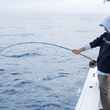
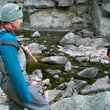
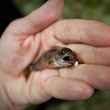

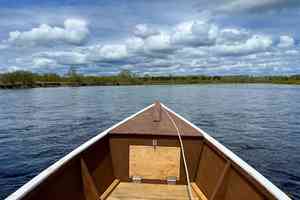


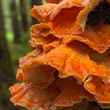
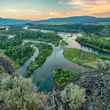
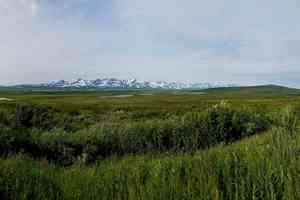


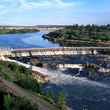




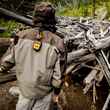
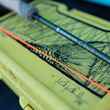



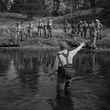
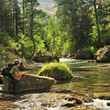
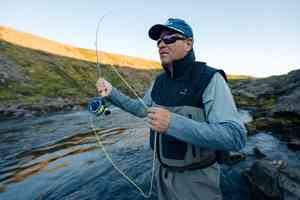


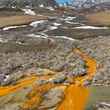
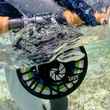
Comments
Roger Dailey replied on Permalink
I think I understand the concept of preserving the natives. I'm just glad the Cherokee natives don't feel that way when they see this European/North American hybrid (me) fishing their waters.
Will Rice replied on Permalink
As someone who has lived, and fished, in Alaska for the last forty years, I can say that catch and release rules are a bit different here than where I grew up (near the South Fork).
First, salmon, assuming they are bright and haven't started to color up, are always on the menu if the regs allow a take. Fish and Game manages them for a significant sport and commercial harvest, and not even the most adamant catch and release angler will turn down fresh sockeye on the grill..
Second, rainbows (including steelhead) are always released. We are just too close to the edge of their range for them to support a killing fishery.
Third, grayling and dolly varden (arctic char) are numerous enough in most remote streams that a limited take is no problem. We usually figure one, maybe two nights of char dinner on a eight or nine day float trip in a remote area. Grayling don't keep well, so plan on eating them the day they are caught.
On streams that are heavily fished, like those on the Kenai Peninsula, near Anchorage, I release everything except salmon. There is a lot of wild country here and in the Yukon, but the limited road access means that most of the streams you are able to fish will be heavily used. If you can reach your fishing stream with a car, you should probably plan on burgers for dinner.
Pages